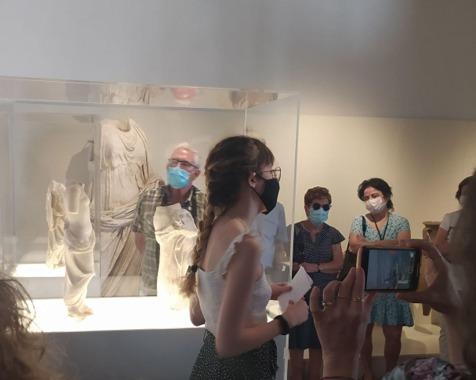
Accessibility implies that a product or service relating to any aspect of human life can be used by everyone, regardless of their needs. From the field of Translation and Interpreting, a theoretical and applied line of research has been developed on the analysis, description and practice of accessibility, which contains a wide variety of modalities of intersemiotic translation, both inter and intralinguistic. This line of research has a great social impact, as it aims to guarantee access to knowledge and culture, universal rights recognised by the United Nations General Assembly in the Convention on the Rights of Persons with Disabilities of 2006. However, accessibility not only helps attain fundamental rights for people with disabilities. For instance, nowadays it is increasingly common for people without any kind of hearing impairment to choose the option of subtitling for the deaf and hard-of-hearing (SDH) offered by streaming platforms when in contexts or places where it is practically impossible to enjoy the sound of any audiovisual product. In the administrative and legal fields and in the museum context, to name but a few, the benefit provided by easy-to-read (E2R) texts, whose content would otherwise be inaccessible to the lay public, is unquestionable. These examples show how accessibility greatly improves the lives of the entire population, and not just minority groups.
Accessibility has been an ongoing line of study for several researchers related to the Master's Degree in Professional Translation at the University of Granada, many of them members of the TRACCE research group (Translation and Accessibility, HUM770) or frequent collaborators, as well as some members of the LexiCon research group (Contrastive Lexicography: Applications To Translation, HUM122). In their pioneering research works, they have focused on the access to knowledge for people with sensory disabilities, studying audio-description for the blind and visually impaired, SDH and sign language interpreting. Especially the first two modalities mentioned allow users other than those of the primary target groups to enjoy audiovisual products more. For instance, and in addition to the examples already provided, SDH can be very useful for foreigners learning a new language or for children learning to read. More recently, their line of research has also addressed E2R, whose primary users include people with cognitive diversity and reading comprehension difficulties, the elderly, immigrants, children and adolescents.
The extensive experience and knowledge of accessibility of all these researchers plays an important role in the syllabi of courses within the speciality of Audiovisual Translation and Accessibility of the Master's degree, such as Translation and Accessibility or Subtitling. However, the transversal nature of this line of research, which is linked to Corpus Linguistics, Terminology and, in general, to the field of Translation Technologies, gives it a certain prominence in other core and specific courses outside the speciality. For instance, in courses such as Practice in Scientific-Technical Translation, students are trained to translate specialized texts for groups with special needs by means of the production of E2R texts. This situation allows students to acquire basic knowledge of the different types of accessible translation and to recognise its relevance, transcendence and social impact throughout the Master's degree. The presence of pioneering researchers in the field of accessibility is complemented by the collaboration of companies and associations working in this field, such as Kaleidoscope Access, which host students during their internships and facilitate their participation in professional accessibility projects.
An example of the latest initiatives carried out in the museological context was the audio-descriptive visit for visually impaired people to the Archaeological Museum of Granada, organised by the Spanish National Organisation for the Blind (ONCE) and the TRACCE research group, with the collaboration of Kaleidoscope Access.
In a society in which we must aspire to leave no one behind, the translation-accessibility binomial takes on special relevance to achieve this goal. Students of the Master's Degree in Professional Translation are trained for this purpose, both because of the niche market it represents for graduates and because of its usefulness to society.
Details
- Publication date
- 23 September 2021
- Language
- Dutch
- English
- Italian
- EMT Category
- Translation issues
